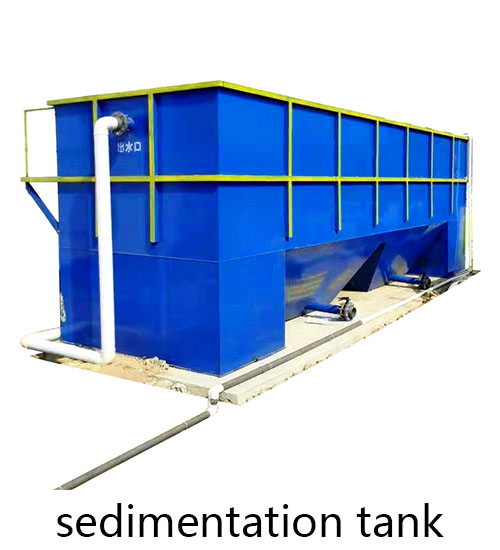(I). Analysis of the causes of MBR blockage
1. Wastewater quality
The nature of wastewater has an important impact on MBR blockage. High concentrations of organic matter, inorganic salts, suspended solids, and microbial content will increase the degree of membrane fouling. For example, in the treatment of printing and dyeing wastewater, organic matter such as dyes and additives and inorganic matter such as heavy metal ions in the wastewater are easily deposited on the membrane surface and in the membrane pores, causing blockage. According to research, for every 100 mg/L increase in dye concentration in printing and dyeing wastewater, the rate of decline of membrane flux will increase by about 15% – 20%; when the concentration of heavy metal ions (such as copper, zinc, etc.) exceeds 5 mg/L, it will also significantly accelerate the membrane fouling process.
(II) Operating conditions
1. Flow rate
A lower flow rate will cause the wastewater to stay on the membrane surface for too long, increasing the chance of pollutant deposition and easily leading to membrane clogging. Although a higher flow rate can reduce the deposition of pollutants, it will also increase the shear force of the membrane and cause mechanical damage to the membrane. Studies have shown that when the flow rate is lower than 0.5m/s, the deposition rate of pollutants on the membrane surface will increase significantly; and when the flow rate exceeds 2m/s, the risk of mechanical damage to the membrane will increase. Therefore, it is generally recommended that the flow rate of the MBR system be controlled between 0.8-1.5m/s.
2. Pressure
Too high transmembrane pressure will accelerate the adsorption and deposition of pollutants on the membrane surface, and will also cause more pollutants to enter the membrane pores, resulting in increased blockage. According to experimental data, when the transmembrane pressure increases from 0.1MPa to 0.3MPa, the deposition of pollutants on the membrane surface will increase by about 30% – 40%. Therefore, in actual operation, the transmembrane pressure needs to be reasonably controlled, generally within the range of 0.05 – 0.2MPa.
3. Aeration intensity
Aeration plays an important role in MBR systems. It not only provides oxygen for microorganisms, but also generates shear force on the membrane surface through the rising effect of bubbles to prevent pollutant deposition. However, excessive aeration intensity may cause scouring damage to the membrane, while too low aeration intensity cannot effectively prevent membrane clogging. Studies have found that when the aeration intensity is 10-20L/(m²·h), it can effectively prevent the accumulation of pollutants on the membrane surface; when the aeration intensity exceeds 30L/(m²·h), the risk of membrane scouring damage will increase significantly.
(III) Membrane characteristics
1. Membrane material
Different membrane materials have different surface properties and chemical stability, and their adsorption and anti-pollution capabilities for pollutants are also different. For example, polyvinylidene fluoride (PVDF) membrane has good chemical stability and anti-pollution performance, while polyacrylonitrile (PAN) membrane is relatively susceptible to organic contamination. According to comparative experiments, after running for a period of time under the same wastewater conditions, the flux decrease of PAN membrane is about 25% – 35% higher than that of PVDF membrane.
2. Membrane pore size
The size of the membrane pore size directly affects the pollutant retention effect and the risk of clogging. Smaller membrane pores can more effectively retain pollutants, but are also more easily clogged by tiny particles and colloids; larger membrane pores can reduce the risk of clogging, but the retention effect of pollutants will be reduced. Studies have shown that when the membrane pore size is reduced from 0.1μm to 0.01μm, the retention rate of pollutants can be increased from 80% to more than 95%, but the risk of membrane clogging will also increase by about 3-5 times.
(IV). Preventive measures for MBR blockage
1. Optimizing wastewater pretreatment
Before the wastewater enters the MBR system, effective pretreatment can remove most of the suspended matter, large particles and some organic matter, reducing the degree of membrane pollution. Common pretreatment methods include screens, grit chambers, coagulation sedimentation, filtration, etc. For example, the use of screens can effectively remove floating matter and suspended matter with a particle size greater than 10mm in the wastewater; the grit chamber can remove inorganic particles such as sand with a particle size greater than 0.2mm; coagulation sedimentation can make the removal rate of suspended matter in the wastewater reach 80% – 90%; filtration can further remove particles with smaller particle sizes and colloidal substances, significantly improving the water quality of the wastewater entering the MBR system.
2. Reasonable control of operating conditions
1. Flow rate control
According to the characteristics of the membrane and the nature of the wastewater, the flow rate of the wastewater is reasonably adjusted to ensure the effective removal of pollutants and reduce the risk of membrane clogging. Generally speaking, a higher surface flow rate is recommended to enhance the shear force on the membrane surface and prevent pollutant deposition. For example, in some MBR systems in actual operation, when the surface flow rate is controlled at 1.0-1.2m/s, the pollutant deposition rate on the membrane surface is significantly reduced, and the stability of the membrane flux is improved.
2. Pressure control
Strictly control the transmembrane pressure to avoid excessive pressure that may lead to increased membrane blockage. By installing a pressure monitoring device, the changes in transmembrane pressure can be monitored in real time, and the operating parameters can be adjusted according to the actual situation. For example, when the transmembrane pressure exceeds the set value (such as 0.15MPa), the aeration intensity is automatically reduced or the wastewater flow is adjusted to maintain the transmembrane pressure within a reasonable range.
3. Aeration control
Reasonably adjust the aeration intensity to ensure that there is enough shear force on the membrane surface to prevent pollutant deposition and avoid damage to the membrane. The aeration intensity can be adjusted according to factors such as the type of membrane, the nature of the wastewater, and the operation of the system. For example, for wastewater that is prone to pollution, the aeration intensity can be appropriately increased in the early stage of system operation to enhance the cleaning effect of the membrane surface; as the system operation stabilizes, the aeration intensity can be gradually reduced to save energy.
(III) Select appropriate membrane materials and membrane components
According to the water quality characteristics and treatment requirements of the wastewater, select membrane materials and membrane components with good anti-pollution performance. For example, for wastewater that is easily contaminated by organic matter, you can choose a membrane material with good surface hydrophilicity; for wastewater containing high concentrations of inorganic salts, you can choose a membrane material that is resistant to chemical corrosion. According to research, when treating organic wastewater, membrane materials with a surface contact angle of less than 70° (better hydrophilicity) have an anti-pollution performance that is about 40% – 50% higher than membrane materials with a contact angle greater than 90°.
(V). Cleaning method of MBR blockage
1. Physical cleaning
1.1. Back flushing
Backwashing is a commonly used physical cleaning method that uses reverse water flow to wash away pollutants on the membrane surface. The frequency and intensity of backwashing need to be adjusted according to actual conditions to avoid damage to the membrane. Generally speaking, regular backwashing (such as flushing every 8-24 hours) with each flushing time of 10-30 minutes can effectively remove most of the pollutants on the membrane surface and restore membrane flux. Experiments have shown that after backwashing, the membrane flux can be restored to about 80%-90% of the initial flux.
1.2 Air-water mixed cleaning
Air-water mixed cleaning combines the rising effect of bubbles and the flushing effect of water flow, which can more effectively remove pollutants on the membrane surface. During the air-water mixed cleaning process, the impact force generated when the bubbles burst on the membrane surface can peel off the pollutants from the membrane surface, and the water flow can carry away the peeled pollutants. According to research, the effect of air-water mixed cleaning (air-water ratio of 1:1 – 2:1) is better than simple hydraulic flushing, and the recovery rate of membrane flux can be increased by 10% – 20%.
2 Chemical cleaning
2.1 Pickling
For inorganic pollution, such as calcium carbonate scale, calcium sulfate scale, etc., pickling can be used for cleaning. Commonly used acids include hydrochloric acid, citric acid, etc. When pickling, it is necessary to pay attention to controlling the acid concentration and cleaning time to avoid corrosion to the membrane. For example, pickling with a hydrochloric acid solution with a concentration of 2% – 5% and a cleaning time of 30 – 60 minutes can effectively remove calcium carbonate scale, but the membrane needs to be thoroughly rinsed and neutralized after pickling to prevent residual acid from damaging the membrane.
2.2 Alkaline washing
For organic pollution, such as grease, protein, etc., alkali washing can be used for cleaning. Commonly used alkalis include sodium hydroxide, potassium hydroxide, etc. When alkali washing, it is necessary to pay attention to controlling the concentration and temperature of the alkali to prevent damage to the membrane material. For example, using a sodium hydroxide solution with a concentration of 1% – 3%, alkali washing at a temperature of 40 – 60 ° C, and a cleaning time of 40 – 90 minutes can effectively remove organic pollutants on the membrane surface.
2.3 Oxidant cleaning
For microbial and metabolite contamination, oxidants can be used for cleaning. Commonly used oxidants include sodium hypochlorite and hydrogen peroxide. Oxidants can destroy the cell structure of microorganisms and remove pollutants such as biofilms and extracellular polymers. For example, using a sodium hypochlorite solution with a concentration of 50-200 mg/L for cleaning for 60-120 minutes can effectively kill microorganisms, remove biofilms, and restore membrane flux.


生化膜反应器14-scaled.jpg)
生化膜反应器12-scaled.jpg)


